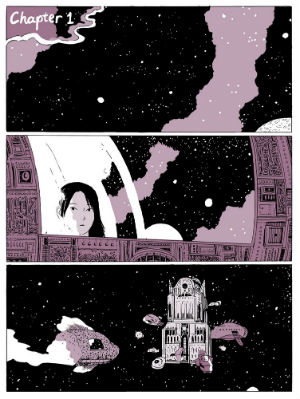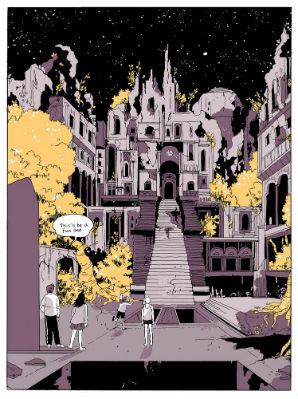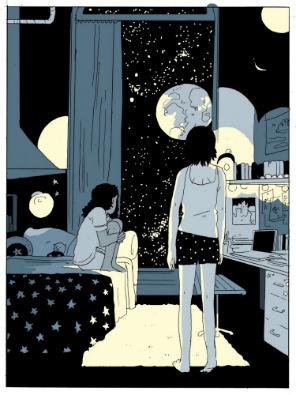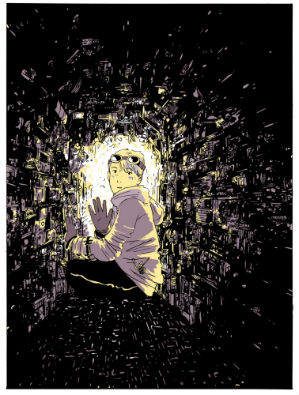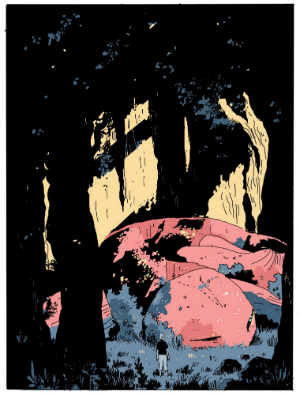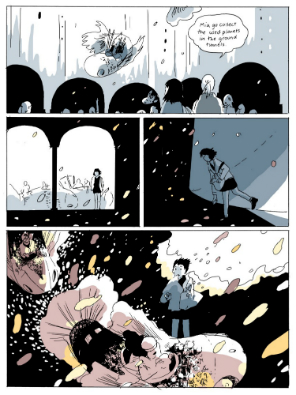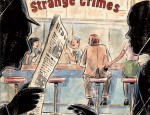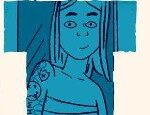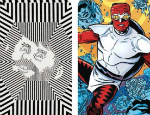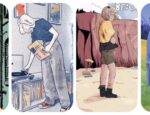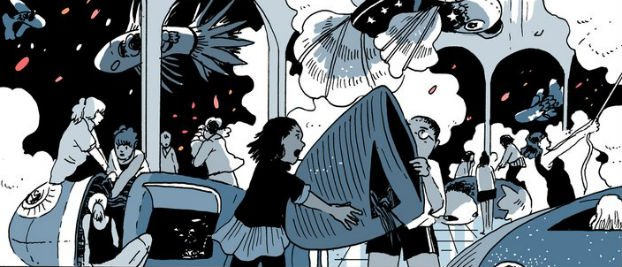
“Sci-fi is way not my usual thing. But look, honestly I just wanted to draw lots of stars. Space is a great excuse to draw stars. And I feel like sci-fi gives me an excellent excuse to do whatever I want to when it comes to setting and logic.”
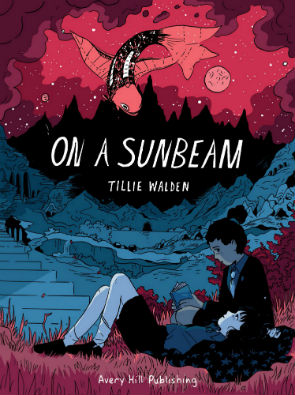 That was the low-key way in which artist Tillie Walden described the reasons behind her first foray into science fiction when I interviewed her at BF about On a Sunbeam back in 2016; an endearingly self-deprecating piece of reasoning she repeated when I had the pleasure of discussing the story with her in person on the 2017 Broken Frontier Panel at Nobrow’s East London Comics and Arts Festival (ELCAF).
That was the low-key way in which artist Tillie Walden described the reasons behind her first foray into science fiction when I interviewed her at BF about On a Sunbeam back in 2016; an endearingly self-deprecating piece of reasoning she repeated when I had the pleasure of discussing the story with her in person on the 2017 Broken Frontier Panel at Nobrow’s East London Comics and Arts Festival (ELCAF).
Originally presented as a serialised webcomic between 2016 and 2017, On a Sunbeam was collected in print last year by Avery Hill Publishing in the UK (whose gorgeously presented hardcover was used for the purposes of this piece) and First Second in the US. So, given its long shelf life in digital and now print incarnations, and the breadth of coverage of the project in that time, I thought it might make this review a little less repetitive by interspersing some of Walden’s own italicised thoughts on the comic from that earlier Broken Frontier interview with my own observations.
“I’m not a huge sci-fi fan so I really don’t know much about the genre and I’ve found that because of that all my ideas feel very fresh and bizarre. I purposely tried to design the world in a way that wasn’t typical. I saw Star Wars for the first time about a year ago and thought it was really boring. And it seemed like such a waste to take a space setting and make it be full of dull machinery and dust. Also silly clothes. Oh god I’m gonna make people angry.”
Walden’s take on space opera is, indeed, one that feels fresh and unhampered by the usual standards of the genre. On a Sunbeam follows central character Mia in two separate, chronologically displaced timeframes that slowly reveal their links before converging into a memorable finale. In the present we meet Mia as she works with a restoration team, travelling the stars in their fish-shaped spaceship and renovating the abandoned buildings that are an intriguingly incongruous fixture of that astral terrain.
Flashing back to her childhood we also follow Mia’s story during her schooldays which, despite its deep space setting, is a most recognisable evocation of those formative years full of familiar elements of self-discovery, peer rivalries, and the misery of bullying. It’s here that Mia meets and falls in love with the enigmatic Grace. And it’s that relationship that will eventually tie the two story threads together. Connections between the work colleagues who have become her family and her first love will lead to a trip to the mysterious world known as The Staircase as Mia looks to reconcile herself with the events of her past…
“…the point is, is that to me space is limitless. And it seems like the perfect place to fill with everything my imagination can come up with. I don’t care that trees can’t exist in space; my space world has tons of them. Also fish ships. That’s a whole thing.”
Like all the best science fiction, of course, On a Sunbeam‘s more outlandish trappings are essentially visual adornment on a very human and universal story; one that combines coming-of-age themes with explorations of regret, identity and reconciliation. Walden gives free rein to her fertile imagination, never bound by a need to explain the internal logic of her setting and instead asking her readership to take its wonders and oddities at face value. There’s certainly a feeling of place and world-building akin to her early work in The End of Summer.
“I really wanted the environment to reflect Mia. She’s the most important person in this narrative so I wanted to shape the world around where she was at. And in the first chapter, for example, it feels like for Mia everything is moving and changing and growing. And so I tried to draw backgrounds and shapes that pulled at edges, that made her world move. In future chapters the setting will change somewhat, because, well, Mia will change.”
In terms of colouring as a storytelling tool, On a Sunbeam‘s outstanding use of different shades and hues to delineate time and setting and to reflect tone and theme is both subtle and potent. Architecture also plays its familiar role in defining environment in Walden’s work but it’s also contrasted with something more organic and ethereal in some of the book’s eerier settings. Indeed there’s something Ditko-esque about the alien worlds here – not in terms of any direct comparison between the styles of the two artists but in the way that both creators draw us so directly into the unique otherness of the worlds they create. And, of course, it almost goes without saying that visual characterisation in On a Sunbeam is as eloquent as ever in a Walden offering.
“Man, writing for a webcomic is HARD. Much harder, at least for me, than a standalone graphic novel. The biggest challenge for me is finding a way to make each chunk interesting. I know how everything connects and works in the long run, but the reader doesn’t! So I’ve had to find a way to make each chapter in itself its own small story with a beginning, middle and end, because I want the reader to be satisfied and curious with every chapter.”
On a Sunbeam adopted a different method of delivery than the slower, incremental updating that many online serialised comics prefer. As a result its collected edition feels very episodic in structure, giving us chapter-sized bursts that are highly effective in terms of pacing and allow due time for the sprawling but richly realised cast of female and non-binary characters to have their own moments in the spotlight. The transition from web to print feels seamless in a story that is carefully constructed to take advantages of the individual strengths of both mediums.
On a Sunbeam is a book of resonant echoes, both in terms of its structure and the journeys the characters embark upon, and a celebration of adopted family, friendship and a love that is as expansive as the near infinite reaches of the universe it is a part of. It was four years ago this week that we were fortunate enough at Broken Frontier to be given the exclusive reveal of Tillie Walden’s first book from Avery Hill Publishing and it’s been an incredible experience seeing this remarkable artist develop into a major force in the medium. The Tillie Waldens of this world come along once in a reviewer’s lifetime but with On a Sunbeam exceeding 550 pages there’s plenty to keep revisiting here from this ever prolific creator.
Tillie Walden (W/A) • Avery Hill Publishing/First Second, £24.99/$32.99
Buy online here from Avery Hill Publishing here
Review by Andy Oliver





